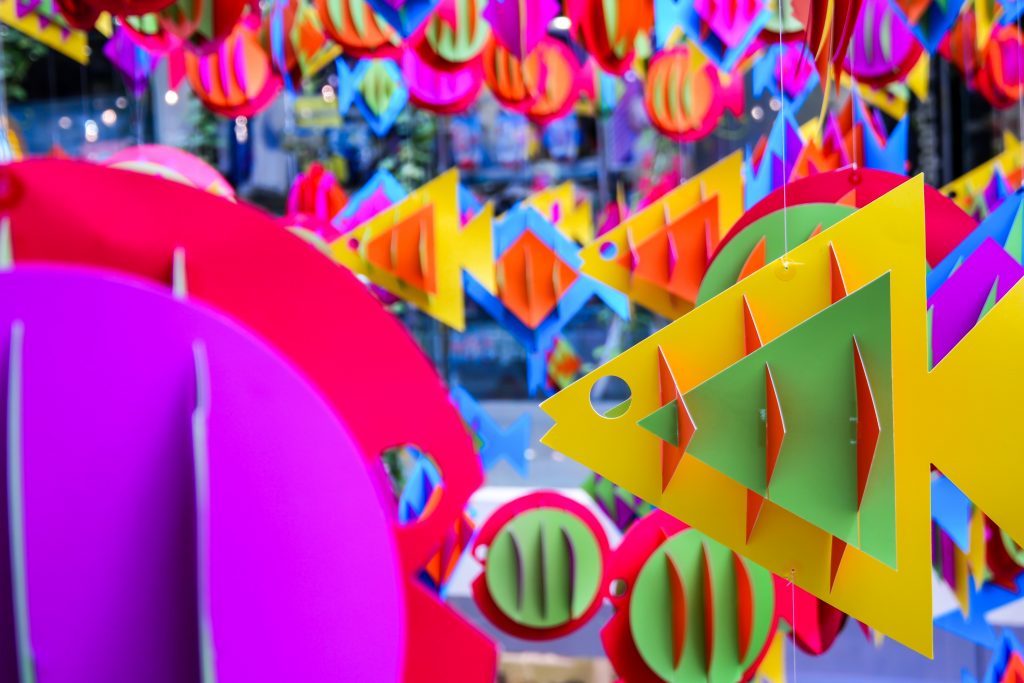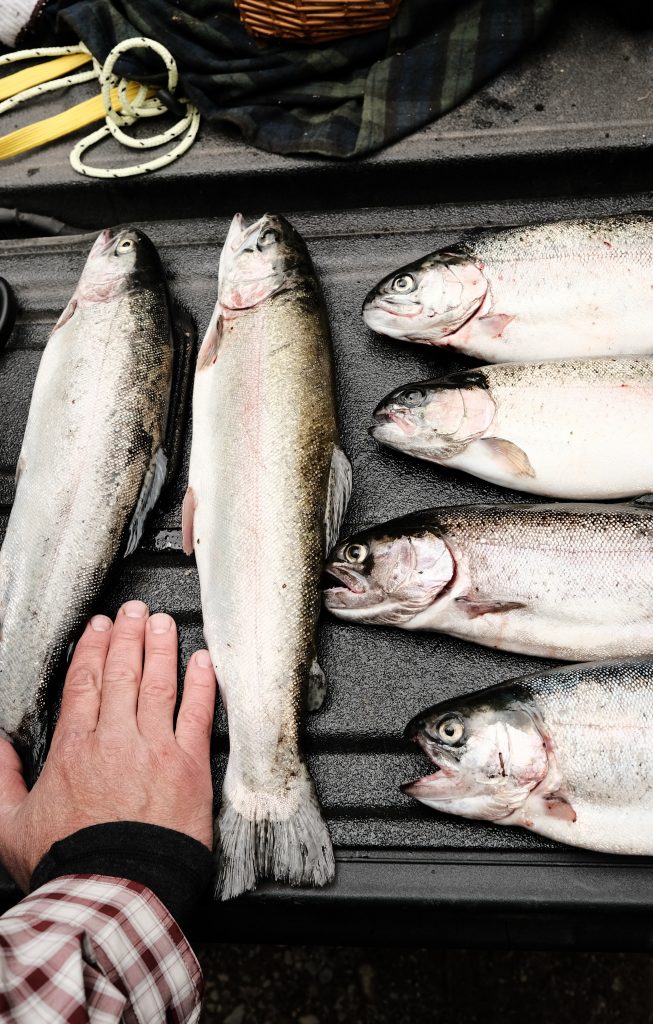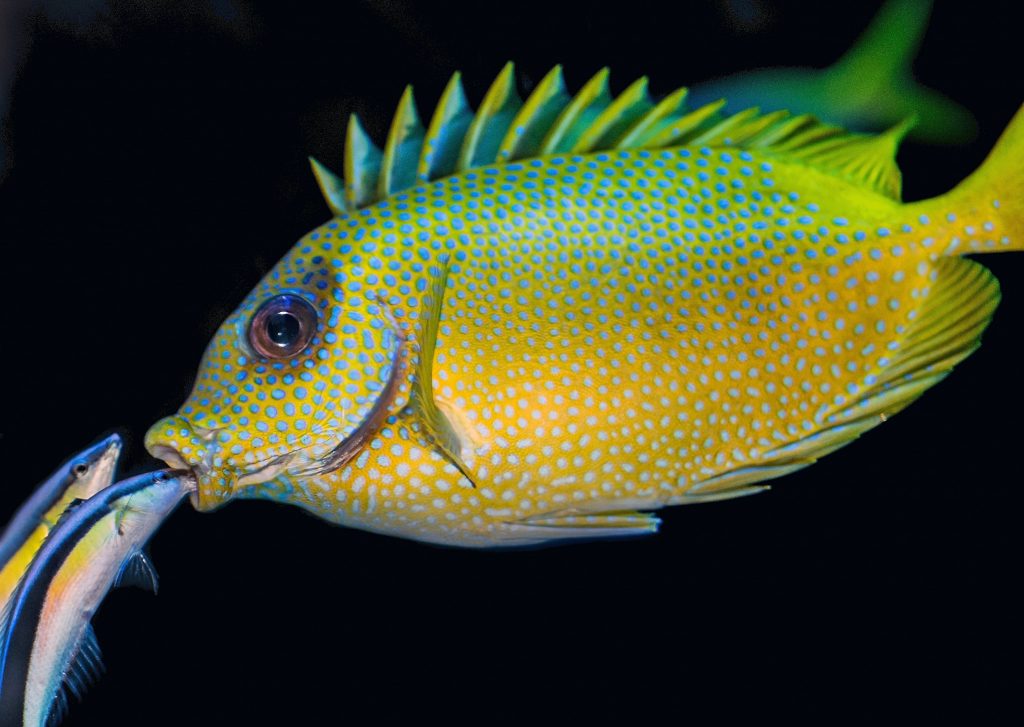Roberta Gibson

Fish Anatomy
Study pictures of fish, then do an arts and craft project by making a fish out of a variety of materials.
For example, make an easy fish out of two paper plates. Cut one plate in half and fasten (glue, tape, or staple) one half to the whole plate as a fishtail. The remaining piece can be cut into fins. You can add heart-shaped fish lips, eyes, gills, etc. Supply glitter and bits of aluminum foil for “scales.” Paint a large piece of butcher paper with an underwater scene, and attach or hang your fish in front of it.
Try paper maché fish using a balloon as the body and gluing on the tail and fins with a hot glue gun. Use felt for the fins. Look at pictures of fish for inspiration.
Fish Anatomy Advanced
If your children seem eager for more, you can teach them the parts of the fish (each fin has a special name and purpose) and how their gills work to remove oxygen from the water. You can also discuss the names of different kinds of fish and what their shape and colors are used for. You can investigate how fish have special organs for swimming and buoyancy, such as the swim bladder.

Fish anatomy, identification, and behavior at Growing with Science blog.
The next obvious step is a fishing trip or trip to the seafood section of the grocery store for a whole fish to dissect. Be sure to have a book handy if you are not familiar with all the parts (preferably choose a book that can withstand smelling somewhat fishy). If possible, take a look into the stomach to see what your fish has been eating.
Follow up with an art activity by making fish prints. The Japanese invented this art form called Gyotaku. Basically you take a real (dead) fish, wash it carefully, cover it with paint and make a print with it.
Chemistry
You can investigate many aspects of water quality while learning chemistry. Testing for pH is relatively simple and only requires litmus paper or another pH indicator and these are usually easy to find and are inexpensive.
Other aspects of water quality include dissolved oxygen. Fish and other aquatic life may be under water but they still need oxygen. You can test for how much oxygen is dissolved in different types of water.
To test for the salinity or dissolved salts in your water you will need a hydrometer or salimeter. See if your local pet store or college fish biology department has one they will let you borrow (it never hurts to ask). You can also buy them at aquarium supply houses. You can make up solutions with different amounts of table salts to learn how to use the machine.
Check your pet shop or hobby shop for detailed books about keeping fish and how to maintain water quality and for test kits. Scientific and educational supply catalogs also often carry aquarium equipment and lesson plans.
Fish species identification games
Have your children create cards with different types of fish on them and then make up games. Try fish flash identification, fish concentration (make two copies of each fish card for making pairs), or make a board for fish bingo. How about a fish food chain version of war with pictures of plant feeders and predators? Look for realistic fish stickers to use for games.

Resource: Wikimedia has a large collection of high-quality public domain illustrations of many types of fish and other items donated by ScottForesman https://commons.wikimedia.org/w/index.php?title=Category:PD-ScottForesman
Take a trip
Take a field trip to one of the many commercial and public aquariums nationwide. We have visited aquariums in Philadelphia, Chicago, New Orleans, Albuquerque, Denver, Monterey Bay, and San Diego. I bet there is one near you.
Read some great books about fish
Popular children’s fiction books are:
Be sure to check out the growing list of children’s books about fish at Science Books for Kids.
Ready to add water?
Roberta Gibson shows us how to build an aquarium in Adding Fish to Your World.
Roberta Gibson worked for a number of years as an entomologist before she caught the writing bug. Her debut picture book “How to Build an Insect” was released in April 2021. You can visit her at https://robertagibsonwrites.com/ , Growing with Science Blog, Twitter @RobertaGibson, or Instagram @RobieGibson.
Copyright April 2002, June 2021
Originally published in May/June 2002 issue of HELM (Home Education Learning Magazine)


